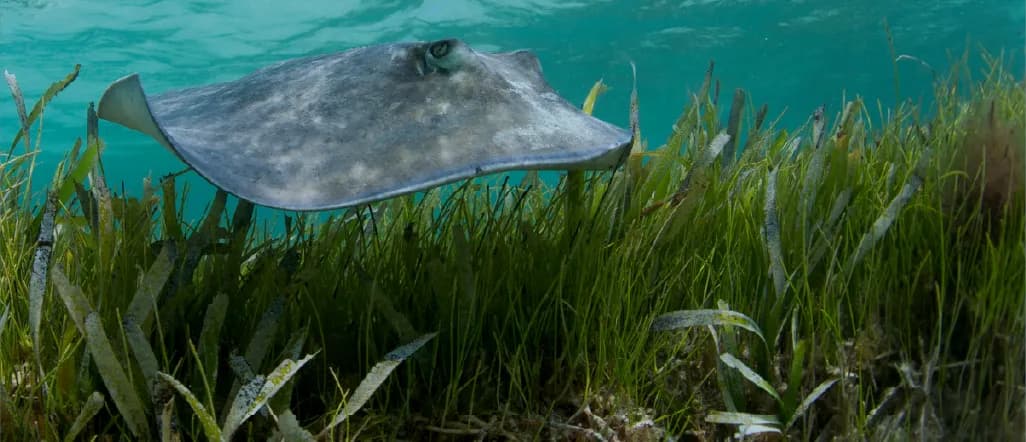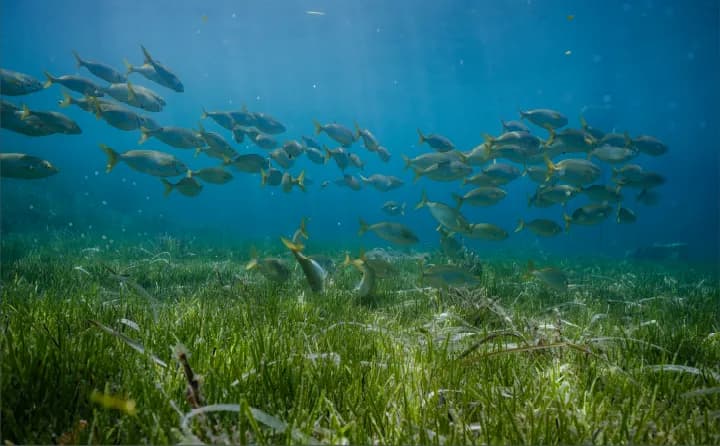Work/Carbon Projects/Blue Carbon/Seagrass Restoration and Conservation
Seagrass Restoration and Conservation
Safeguard our planet's underwater ecosystems. Seagrass restoration and conservation are crucial for marine biodiversity, water quality, coastal protection, and climate change mitigation.
Why Seagrass Matters: A Vital Ecosystem
Seagrass meadows are vital to our planet's health. These underwater plants provide essential habitat for marine life, improve water quality, and play a critical role in carbon sequestration. ProClime's Seagrass Restoration and Conservation projects help safeguard coastal ecosystems and combat climate change.
Seagrass restoration programs rehabilitate essential marine ecosystems that support biodiversity, stabilize sediments, and filter pollutants. These efforts also help improve water quality and play a key role in carbon sequestration, aiding in climate change mitigation. By restoring seagrass meadows, these programs contribute to healthier marine environments and more resilient coastal ecosystems.At ProClime, our seagrass restoration programs focus on rehabilitating these critical marine ecosystems. We employ a comprehensive approach that involves identifying suitable sites, transplanting seagrass seedlings, and monitoring their growth and survival. Additionally, we engage with local communities to promote sustainable practices and minimize human impact on seagrass meadows. By restoring and conserving these ecosystems, we contribute to healthier oceans, improved water quality, and enhanced coastal resilience.
1. Comprehensive Site Assessments & Habitat Mapping
Detailed site assessments and habitat mapping is done to identify priority areas for seagrass restoration, focusing on critical ecological factors.
2. Community & Stakeholder Engagement
Collaboration with local communities and stakeholders is fostered to integrate traditional knowledge, ensuring restoration aligns with local environmental and social needs.
3. Advanced Monitoring & Data Collection
Remote sensing and in-situ data collection is used to monitor seagrass health, tracking progress and changes over time.
4. Adaptive Conservation Strategies
Restoration efforts are continuously refined based on data-driven insights, adjusting methods to optimize the ecosystem’s resilience and growth.
Registration Body:

Methodology: VM0033
Program Type:

SDG Goals:

Benefits of Project
Why ProClime?
Frequently Asked Questions
Seagrass is a flowering plant that grows submerged in marine environments. It forms meadows in shallow coastal waters, providing a vital habitat for a diverse range of marine organisms. Unlike seaweed, seagrass is a true plant with roots, stems, and leaves.
Seagrass restoration and conservation involve a series of steps to protect and restore these vital marine ecosystems. This includes Site Assessment and Selection, Nursery Establishment, Planting and Care, Monitoring and Maintenance and Community Engagement
Seagrass is crucial for several reasons: Ecosystem Services: Seagrass meadows provide vital ecosystem services, including supporting marine biodiversity by offering habitat and nursery grounds for various fish and invertebrates. They also help stabilize sediments, preventing erosion and improving water clarity. Carbon Sequestration: Seagrasses are highly effective at capturing and storing carbon dioxide from the atmosphere, which helps mitigate climate change. They sequester carbon in their biomass and the sediments they stabilize. Nutrient Cycling: Seagrass meadows play a role in nutrient cycling by absorbing excess nutrients from the water, which can reduce the occurrence of harmful algal blooms and improve overall water quality.
Seagrass restoration faces several challenges: Site Selection and Preparation: Choosing suitable sites for restoration is critical, as they must have the right environmental conditions, such as water depth, light availability, and sediment type. Preparing these sites often involves removing harmful substances or debris that could hinder seagrass growth. Recruitment and Planting: Reintroducing seagrass species can be challenging due to the difficulty in obtaining healthy plant material and ensuring its successful establishment. Restoration projects may use techniques like seed planting, transplantation of mature plants, or nursery-grown seedlings to address this challenge. Environmental Stressors: Seagrass meadows are vulnerable to environmental stressors such as pollution, sedimentation, and climate change. Effective restoration must include measures to mitigate these stressors, such as reducing nutrient runoff, managing coastal development, and monitoring for climate impacts. Monitoring and Maintenance: Long-term success requires ongoing monitoring to assess the health and growth of restored seagrass meadows. This includes tracking factors like plant density, water quality, and the presence of key species, along with addressing any issues that arise.
Individuals and communities can contribute to seagrass conservation in several ways: Reducing Pollution: Supporting and implementing practices that reduce pollution, such as proper waste disposal, minimizing the use of harmful chemicals, and participating in community clean-up events, can help protect seagrass habitats from nutrient runoff and contaminants. Supporting Conservation Organizations: Getting involved with or donating to organizations that focus on marine conservation, including seagrass restoration projects, can provide crucial funding and support for these efforts. Promoting Sustainable Practices: Advocating for and adopting sustainable practices, such as responsible boating, fishing, and coastal development, helps minimize the impact on seagrass meadows. Education and awareness campaigns can also promote understanding and support for seagrass conservation. Participating in Citizen Science: Engaging in citizen science projects that monitor seagrass health and collect data can contribute valuable information for ongoing research and conservation efforts. Volunteer opportunities may include monitoring programs, planting initiatives, or habitat restoration activities.
Our Unique Climate Solutions

Achieve your Sustainability Goals with ProClime
Preserve ecological functions, marine biodiversity, and water quality with ProClime's Seagrass Restoration and Conservation projects.
Talk to Our Experts

